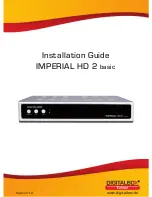1. General
description
The TJA1055 is the interface between the protocol controller and the physical bus wires in
a Controller Area Network (CAN). It is primarily intended for low-speed applications up to
125 kBd in passenger cars. The device provides differential receive and transmit
capability but will switch to single-wire transmitter and/or receiver in error conditions. The
TJA1055 is the enhanced version of the TJA1054 and TJA1054A. TJA1055 has the same
functionality but in addition offering a number of improvements. The most important
improvements of the TJA1055 with respect to the TJA1054 and TJA1054A are:
•
Improved ElectroStatic Discharge (ESD) performance
•
Lower current consumption in sleep mode
•
Wake-up signalling on RXD and ERR without V
CC
active
•
3 V interfacing with microcontroller possible with TJA1055T/3
2. Features and benefits
2.1 Optimized for in-car low-speed communication
Pin-to-pin compatible with TJA1054 and TJA1054A
Baud rate up to 125 kBd
Up to 32 nodes can be connected
Supports unshielded bus wires
Very low ElectroMagnetic Emission (EME) due to built-in slope control function and a
very good matching of the CANL and CANH bus outputs
Very high ElectroMagnetic Immunity (EMI) in normal operating mode and in low power
modes
Fully integrated receiver filters
Transmit Data (TxD) dominant time-out function
High ESD robustness:
8 kV Electrostatic Discharge (ESD) protection Human Body Model (HBM) for
off-board pins
6 kV Electrostatic Discharge (ESD) protection IEC 61000-4-2 for off-board pins
Low-voltage microcontroller support
2.2 Bus failure management
Supports single-wire transmission modes with ground offset voltages up to 1.5 V
Automatic switching to single-wire mode in the event of bus failures, even when the
CANH bus wire is short-circuited to V
CC
TJA1055
Enhanced fault-tolerant CAN transceiver
Rev. 5 — 6 December 2013
Product data sheet


















